- 84%of respondents are actively involved with blockchain
- 45%believe trust could delay adoption
- 30%see China as a rising blockchain leader
- 28%say interoperability of systems is a key for success
What is the state of blockchain today? In PwC’s 2018 survey of 600 executives from 15 territories, 84% say their organisations have at least some involvement with blockchain technology. Companies have dabbled in the lab; perhaps they’ve built proofs of concept.
Everyone is talking about blockchain, and no one wants to be left behind.It’s easy to see why. As a distributed, tamperproof ledger, a well-designed blockchain doesn’t just cut out intermediaries, reduce costs, and increase speed and reach. It also offers greater transparency and traceability for many business processes.
Gartner forecasts that blockchain will generate an annual business value of more than US $3 trillion by 2030. It’s possible to imagine that 10% to 20% of global economic infrastructure will be running on blockchain-based systems by that same year.
How far along are companies with blockchain?


Four strategies for blockchain success
How do you come up with a business model in which companies in an industry can agree on common standards and operate together? The answer lies in building trust. By focusing on four key areas early in their blockchain efforts, companies can set themselves on a path toward successful execution.
- Make the blockchain business case
- Build an industry ecosystem
- Design deliberately
- Navigate regulatory uncertainty
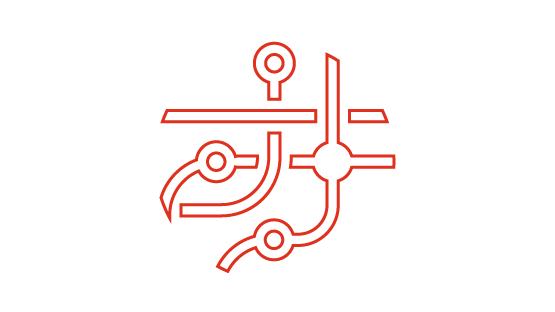
1. Make the business case: Evolution, not revolution
Strategic clarity will ensure that your blockchain initiative has a business purpose around which you and other participants can align.Identify the business value
How blockchain is changing business
There are many indications that blockchain is fundamentally altering the business landscape. Here are just a few significant shifts:
- Tokenisation — the representation of real or virtual assets on a blockchain — is spreading to raw materials, finished goods, income-producing securities, membership rights and more. You can now represent on a blockchain almost everything businesses do.
- Initial coin offerings (ICOs), in which a company sells a predefined number of digital tokens to the public, are funnelling billions of dollars into blockchain platforms. Increasingly an alternative to classic debt/capital funding as provided today by venture capital and private equity firms and banks, ICOs in the first five months of 2018 raised $13.7 billion. The largest ICOs to date have been diverse and included EOS, which is focused on blockchain infrastructure; Huobi Token, a coin for a South Korean crypto exchange; and Hdac, an Internet of Things platform.
- Enterprise software platforms that are the engine for company operations such as finance, human resources and customer relationship management are beginning to integrate blockchain. For example, Microsoft, Oracle, SAP and Salesforce have all announced blockchain initiatives. In the future, many core business processes will run on — or interoperate with — blockchain-based systems. Using blockchain in concert with enterprise resource planning platforms will enable companies to streamline processes, facilitate data sharing and improve data integrity.
- New industry and territory leaders are emerging. Gartner has found that 82% of reported blockchain use cases were in financial services in 2017, but that sector’s portion dropped to 46% of reported use cases in 2018. Our survey respondents still perceive financial services to be the current and near-term future leader of blockchain, but also see potential in industrial products, energy and utilities and healthcare. Moreover, an early centre of gravity in the US and Europe is shifting. Our survey respondents believe that the US is the most advanced territory in developing blockchain today, but that in three to five years, the leader will be China.
Which industries are seen as leaders in blockchain
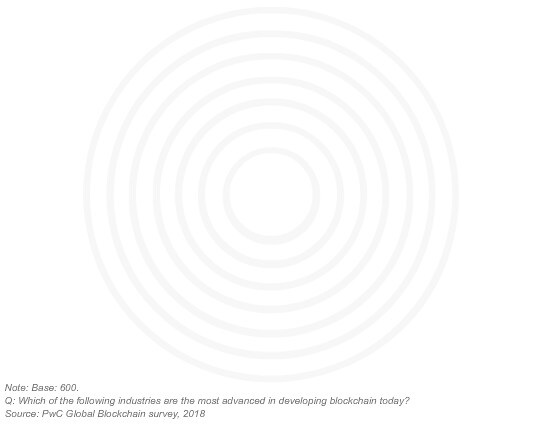
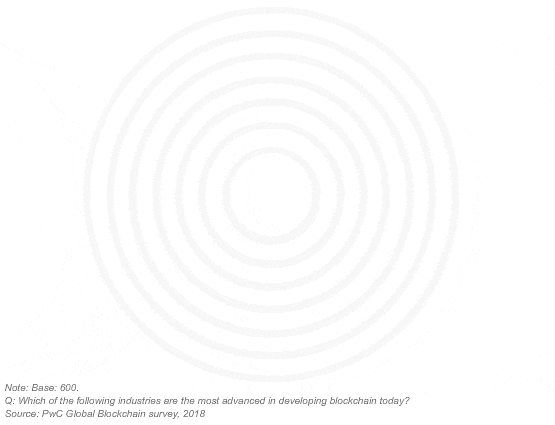
Which territories are seen as blockchain leaders — today and tomorrow
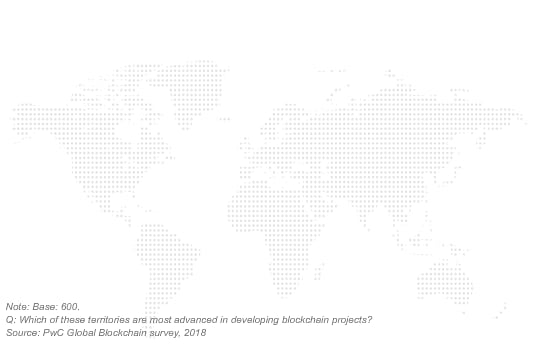
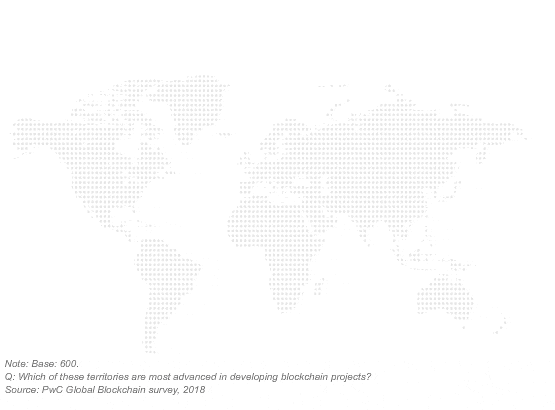
The biggest barriers to blockchain adoption
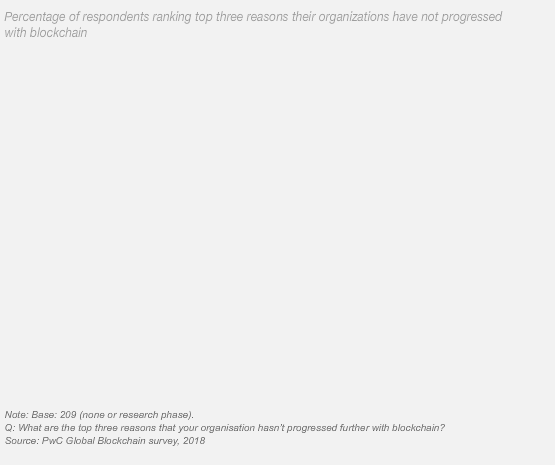
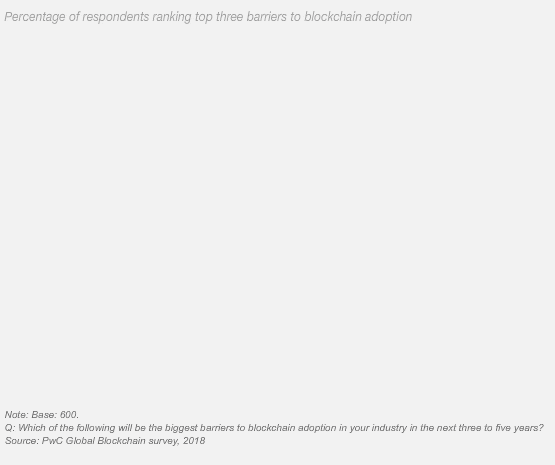
What’s holding blockchain back?
Building a blockchain becomes more complex when third parties participate. Consider a multinational that builds a blockchain to manage an intercompany process such as transfer pricing or treasury management.
Historically, the company might be struggling with dozens of ERP systems and inconsistent data and processes. Instead of one central ledger for each subsidiary, a single distributed ledger can eliminate the need for reconciliation.
Companies are exploring how they might use internal digital tokens to represent cash or other assets, with the aim of streamlining their movement between business units.
Instead of time-consuming (and costly) bank transfers, currency conversions and multiple emails about each transaction, a tokenised transfer can be conducted in near real time via smart contracts and allow users to track each transaction’s progress.
A company creating a blockchain for itself will undoubtedly confront challenges related to internal buy-in, data harmonisation and scale. Still, this company can set and enforce the rules of the blockchain, just as it does with its ERP today. But generally speaking, you don’t realise the greatest return on investment in blockchain if you’re building it just for yourself.
Blockchain’s benefits are best realised when different industry participants come together to create a shared platform. Of course, when you start inviting third parties to engage, you can’t write the rules yourself.
Our survey respondents echo these concerns, with regulatory uncertainty (48%), lack of trust among users (45%) and the ability to bring the network together (44%) making up the top barriers to blockchain adoption.
Why it’s hard to trust a blockchain
Blockchain, by its very definition, should engender trust. But in reality, companies confront trust issues at nearly every turn. For one, users must build confidence in the technology itself. As with any emerging technology, challenges and doubts exist around blockchain’s reliability, speed, security and scalability.
And there are concerns regarding a lack of standardisation and the potential lack of interoperability with other blockchains.
Also contributing to the blockchain trust gap is a lack of understanding. Even now, many executives are unclear on what blockchain really is and how it is changing all facets of business. Although the public narrative has moved beyond bitcoin, even the more recent focus and hype around ICOs only hint at the potential impact.
Blockchain’s role as a dual-pronged change agent — as a new form of infrastructure and as a new way to digitise assets through tokens, including cryptocurrency — is not easy to explain. Think about other new technologies: users can try on virtual reality goggles or watch a drone take flight. But blockchain is abstract, technical and happening behind the scenes.
Another challenge for blockchain is building trust in the network. It is perhaps ironic that a technology meant to bring consensus hits a stumbling block on the early need to design rules and standards. Take payment systems and mechanisms in banking.
Though everyone plays by the rules of existing systems today, they don’t necessarily agree on how an alternative blockchain-based model should be designed and operated.
Likewise, there’s a lack of comfort regarding regulation. The majority of regulators are still coming to terms with blockchain and cryptocurrency.
Many territories have begun studying and discussing the issues, particularly as they relate to financial services, but the overall regulatory environment remains unsettled.







